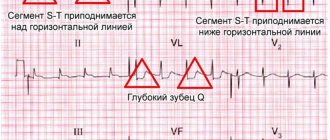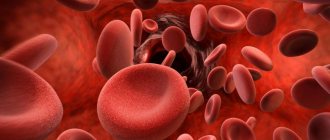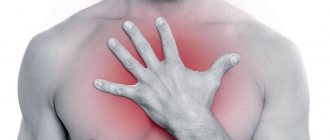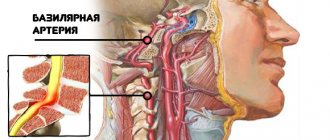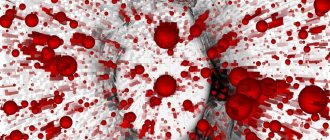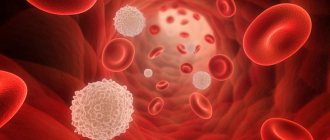Treatment
Treatment for nasolabial acrocyanosis directly depends on the reasons why the baby developed it.
In the case of congenital heart pathologies, the most common of which is patent oval window, with preservation of the heart valve, the child’s parents will be recommended specific care for the baby:
- proper nutrition;
- minimizing stressful situations (a nervous breakdown can cause a heart attack);
- frequent and long walks in the fresh air.
When a diagnosis is made of the absence of a heart valve, surgical treatment is indicated. To determine the type of intervention, you should visit a consultation with a pediatric cardiac surgeon.
If the heart pathology was not diagnosed immediately after the birth of the child, blue discoloration of the nasolabial area may occur until the age of five.
For problems with the respiratory system and the occurrence of cyanosis due to them, the following is prescribed:
- massotherapy;
- swimming and hardening water procedures;
- walks in the open air.
Proper care and compliance with all medical recommendations improve the functioning of the respiratory system and the cyanosis disappears.
If acrocyanosis occurs for physiological reasons, the symptom goes away on its own and disappears completely during the growth and development of the baby.
Treatment
With the development of cyanosis, as well as in the case of its progression, oxygen therapy is recommended, the effectiveness of which helps to reduce or completely eliminate the manifestation of cyanosis.
Blue discoloration of the skin is commonly called cyanosis. Often, cyanosis of the nasolabial triangle is a consequence of insufficient enrichment of tissues with oxygen. This problem looks quite scary. It is a problem, not a disease, because in most cases cyanosis is a symptom of a disease.
Causes of lip cyanosis
Blue skin is associated with an increase in the amount of reduced hemoglobin in the blood. Hemoglobin deprived of oxygen is called reduced. The normal amount of such blood cells is 3 g/l. With cyanosis, the level of reduced hemoglobin can jump to 30 or even 50 g/l.
The following diseases contribute to the development of cyanosis of the lips:
- neuralgia;
- lung disease;
- intoxication;
- poisoning;
- asthma;
- pneumonia;
- pulmonary hemorrhage;
- tuberculosis;
- diphtheria;
- and some others.
The disease can develop on any area of the skin. Yet cyanosis of the nasolabial triangle is most common in adults and children.
In some patients, the symptom manifests itself exclusively in the cold season. Very often, cyanosis appears in those who have been at high altitude for a long time - this is how the body reacts to the lack of oxygen in the air.
Diagnosis and treatment of nasolabial cyanosis
To determine the exact cause of cyanosis of the nasolabial triangle, a professional examination will be required. Sometimes an arterial blood gas test alone is sufficient. But in some cases, additional sources of information may be required: the results of an X-ray examination, blood flow studies, heart and lung studies.
Treatment of cyanosis in most cases consists of prescribing oxygen inhalations. This method helps to effectively and quickly enrich the blood with a sufficient amount of oxygen. In some cases, a special massage helps to achieve a positive effect.
Of course, there are recipes for the treatment of nasolabial cyanosis in folk medicine:
- If the cause of blue skin is poor blood circulation, you can make a mask based on aloe juice and honey. Apply the product to the affected area of skin for about a quarter of an hour.
- An effective remedy is a tincture of horse chestnut fruits. Ripe fruits must be infused for at least 12 hours. The course of treatment is 12 days. It is recommended to drink the product three times a day, one tablespoon.
- And to prevent cyanosis, just regularly spend time in the fresh air.
Blue discoloration caused by a network of capillaries can occur gradually, or it can develop quite abruptly. Disorder caused by health problems is often accompanied by other symptoms. Blue skin mainly indicates improper gas exchange in the lungs, pathologies of the cardiovascular system or other disorders in the patient’s body.
Most often, signs of the disease are observed on protruding parts of the body: lips, tip of the nose, phalanges of the fingers. They are usually combined with other symptoms and appear in severe stages of the disease.
What else causes cyanosis to develop?
Cyanosis can develop on any part of the body, but is most often observed in the area of the nasolabial triangle.
Some patients suffer from this disease only during the cold season. It happens that the appearance of symptoms begins in a person who has been at high altitude for a long time. Lack of oxygen in the air affects the body in exactly this way. The nasolabial triangle is more noticeable in young children. In adults, the symptom appears in cases of severe condition. In some patients it manifests itself as a result of poisoning, diphtheria, asthma, tuberculosis, thrombophlebitis.
Description
In medical language, blue skin is called cyanosis. Such a symptom may indicate hypoxia (lack of oxygen in the baby’s body) and the resulting increase in the level of reduced hemoglobin, which turns the skin and mucous membranes blue.
In cases where blue discoloration is localized around the mouth, on the child’s feet and hands, the condition is called peripheral cyanosis or acrocyanosis. A similar phenomenon occurs in healthy children, but more often premature babies are predisposed to it.
Blueness of the scalp and torso, as well as the mucous membranes of the oral cavity, is called central cyanosis and indicates pathological conditions of the circulatory system, heart or lungs.
Why does cyanosis occur in children?
The cause of the bluish tint of the skin is the accumulation of reduced hemoglobin in the blood instead of oxyhemoglobin. It changes the color of the blood because it is unable to bind and carry oxygen.
The resulting pathology is called hypoxia or oxygen starvation. Cyanosis is one of the clinical manifestations of hypoxia.
The mechanism of education in children is no different from adults. There are child diseases that are rare and unusual for an adult body. They contribute to different types of hypoxia and are accompanied by different clinical manifestations.
Diagnosis of the child’s health condition
A baby who experiences a bluish tint to the skin in the area of the lips and nose is required to undergo the following procedures:
- electrocardiogram;
- ultrasound examination of the heart;
- X-ray;
- Ultrasound examination of the thymus gland.
If the results of these studies do not answer the question of why a child’s nasolabial triangle turns blue, then parents need to show it to a neurologist.
The specialist will determine the presence or absence of pathologies in the nervous and respiratory systems of the small patient.
Determining the level of blood acidity, the violation of which is called acidosis, can help in diagnosing the causes of blue discoloration in the nose and lips. Such an imbalance, depending on its etiology, can be respiratory or metabolic. To detect it, a blood gas analysis is prescribed.
Alarm signal
If the nasolabial triangle turns blue regularly or constantly, then you should think about the presence of serious diseases. Such as tumors of various types, disturbances in the functioning of the heart, blood vessels or respiratory system, poor circulation.
Since blue skin around the mouth is a symptom rather than a disease, it is best to entrust diagnosis and treatment to specialists. The causes and consequences can be very different; it is impossible to establish and prevent them on your own.
Blue discoloration of the skin is commonly called cyanosis. Often, cyanosis of the nasolabial triangle is a consequence of insufficient enrichment of tissues with oxygen. This problem looks quite scary. It is a problem, not a disease, because in most cases cyanosis is a symptom of a disease.
Why does a child's nasolabial triangle turn blue?
Observant parents can often notice blue discoloration in the nasolabial fold area of their newborn baby. This condition causes anxiety and concern among young parents who begin to think about the development of a pathological process in their child’s body. There are many reasons for the formation of this phenomenon.
They can be associated with both pathological phenomena and physiological norms. The most rational tactics for parents in this case is to visit a medical specialist for an unscheduled examination of the baby. In medical terminology, this phenomenon is called cyanosis. This process occurs due to a lack of oxygen in the blood.
Blueness of the nasolabial area occurs when the oxygen concentration in the blood decreases below 95%. In the body of a healthy baby, this phenomenon occurs under the influence of the following reasons:
- Thinness of the skin in the facial area. This especially applies to children who have fair skin and light hair color;
- Excessive emotional overstimulation and excess of emotions. Excessive emotions always provoke a narrowing of blood vessels, resulting in a decrease in oxygen concentration and a blue discoloration of the nasolabial fold;
- The consequences of swimming in cool water. If parents do not comply with the recommended temperature of water for bathing a newborn, the child increases the risk of vascular spasm and, as a result, cyanosis of the nasolabial area.
In addition to physiological ones, there are a number of pathological factors that can lead to the appearance of this symptom. These factors include:
Another less common reason for the appearance of this symptom is a sharp decrease in blood pressure in an infant. As a rule, this phenomenon is associated with the development of serious pathologies of the cardiovascular or nervous system in a child.
When is emergency medical consultation necessary?
The following signs serve as a cause for parental concern:
- The baby has been suffering from a respiratory viral infection for a long time. As a result, the child experiences wheezing, shortness of breath, night breathing becomes heavy and harsh, and blue discoloration is observed in the nasolabial area;
- On the eve of the appearance of this sign, small toys, buttons and other small objects were noticed near the child. If a foreign body enters the bronchi, the baby’s breathing becomes intermittent, his skin begins to turn pale, wheezing, suffocation and pronounced cyanosis occur.
In this case, parents are required to call emergency medical assistance. It is strictly forbidden to resort to the use of tweezers and forceps to independently remove a foreign body.
Diagnostics
To identify the exact cause of this condition, the child is shown the following research methods:
- Ultrasound examination of the heart;
- Electrocardiogram;
- X-ray examination of the chest organs. Using X-ray examination, it is possible to detect diseases such as bronchitis and pneumonia;
- Bronchoscopy. This study allows us to detect the presence of a foreign body in the lumen of the respiratory tract;
- In addition, the baby is given consultations with medical specialists such as a neurologist and a cardiologist.
The nature of assistance to a child facing pathological cyanosis of the nasolabial area depends on the cause of this condition. If this phenomenon is caused by an infectious-inflammatory process of the respiratory tract, then the baby will need specialized medical care, observation in a hospital setting, taking antibacterial drugs, anti-inflammatory and other groups of medications. If the cause of cyanosis is a foreign body, it should be removed by an emergency medical technician.
Prevention
Preventive measures to prevent the occurrence of this condition consist of following these recommendations:
It is important to remember that the correction of serious diseases that caused the formation of this symptom is carried out in a specialized medical institution under the supervision of a doctor
Diagnosis and treatment of cyanosis
The doctor carefully examines the patient and collects anamnesis. The doctor needs to find out the severity of the development of cyanosis, because a sudden appearance of cyanosis may indicate asphyxia, which is accompanied by pulmonary embolism and cardiac tamponade. These conditions require immediate medical attention as they threaten the patient’s life. Cyanosis develops slightly less acutely during an attack of bronchial asthma and as a result of poisoning with poisons and chemical compounds.
Gradually, cyanosis arises and becomes more intense in chronic diseases of the heart and blood vessels, as well as in pathologies of the respiratory system.
Differential diagnosis is carried out based on the condition of the skin, temperature, the presence of other symptoms and data from laboratory and instrumental research methods.
The underlying disease is treated and the intensity of cyanosis gradually decreases with properly selected therapy. Acute asphyxia requires urgent interventions.
If the cause of cyanosis is a congenital or acquired heart defect, then surgical intervention is performed, which makes it possible to significantly improve the prognosis.
The Yusupov Hospital provides assistance twenty-four hours a day, seven days a week. In a high-level institution, which has all the necessary modern equipment and powerful staff, diagnostics, treatment, rehabilitation and prevention are carried out.
The rooms in the Yusupov Hospital are comfortable, designed for one or several patients. There are also intensive care wards. The Yusupov Hospital is multidisciplinary, but each department employs masters of their craft - professors, doctors of medical sciences, practicing doctors who simultaneously conduct scientific activities, etc.
Particular attention should be paid to the rehabilitation department. Our specialists are proficient in a variety of modern techniques, have long work experience, and the efficiency of their work is simply colossal.
Seek advice and ask questions to which you cannot find answers. The website of the Yusupov Hospital contains a large amount of information about rare and common diseases, and is constantly updated. You can make an appointment for a consultation online or by phone.
Author
Ilya Andreevich Gudkov
Anesthesiologist-resuscitator, cardiologist, functional diagnostics doctor
Types of disease
Variants of the algorithm for the development of lip cyanosis divide it into 3 pathological groups:
Central cyanosis is diffuse and of maximum severity. It develops with weak arterialization of the blood, leading to hypoxia.
Gas exchange is disrupted in the lungs, excess carbon dioxide accumulates in the arterial blood, which is clinically manifested by blueness of the conjunctiva of the eyes, palate, tongue, mucous membranes of the lips and cheeks, and facial skin.
Qualitative and quantitative changes in hemoglobin in the blood lead to disruption of its transport function and hypoxia.
manifestations of cyanosis in adults and children
Acrocyanosis is localized on the feet, hands, tip of the nose, ears, lips. Peripheral cyanosis is considered a normal variant in the first days of a newborn baby’s life.
Its origin can be easily explained by the incompletely eliminated germinal type of blood circulation, especially in premature infants.
Blueness of the skin increases with swaddling, feeding, crying, and anxiety. When the infant fully adapts to the outside world, cyanosis will disappear.
Acrocyanosis in adults is a sign of varicose veins, thrombophlebitis, vegetative-vascular dystonia, atherosclerosis, arteritis.
Cyanosis occurs:
https://youtube.com/watch?v=wOx27Clu7r8
Types of cyanosis
Based on the characteristic signs of manifestation and localization, cyanosis is divided into several types.
| Type of cyanosis | Reasons, how it manifests itself |
| Diffuse | In case of impaired blood circulation and pathological processes in the respiratory system, it is localized throughout the body |
| Peripheral | Poor functioning of the heart muscle causes ischemic manifestations of the limbs and convex parts of the face |
| Local | Appears in certain organs with poor blood circulation |
| Acrocyanosis | When venous circulation stagnates, blue discoloration of the ears, lips, and fingers is observed. Thrombophlebitis - a type of acrocyanosis |
When is urgent medical advice needed?
What parents should be wary of:
The child has been suffering from a cold for a long time. He often experiences shortness of breath, wheezing, heavy breathing at night, and pronounced cyanosis has appeared. This may be a harbinger of pneumonia; urgent consultation with a pediatrician is needed. Blueness of the perioral zone appears spontaneously, before this the baby’s chin begins to shake, arms and legs tremble, the child becomes anxious and cries. This may be a harbinger of heart disease; you need to consult a doctor. There were small objects near the child, from buttons to toys. The baby's skin suddenly began to turn pale, breathing was interrupted, or wheezing, suffocation occurred, and cyanosis was pronounced. A foreign body has entered the respiratory tract, you must call an ambulance
You can try to help the baby yourself - place the child on your knee upside down and gently pat him on the back. Compression of the chest can help push the foreign body out of the airway.
Symptoms of cyanosis
With peripheral cyanosis in the capillaries, blood flow slows down and the tissues receive more oxygen, so the blood becomes saturated with carbon dioxide, which is most often a consequence of heart failure, in which there is a slow outflow of venous blood.
If arterial blood does not receive complete saturation, central cyanosis occurs, and the maximum level may be less than 85% of normal. If the skin of the face is dark, cyanosis can be noticed only when the indicator is less than 75%. Such cyanosis develops with heart defects, when mixing of arterial and venous blood occurs, as well as with respiratory failure.
The cause, which can last from ten minutes to a day, may be a severe attack of bronchial asthma or acute pneumonia.
Chronic diseases of the lungs and heart lead to cyanosis, the manifestations of which occur quite gradually. Since cyanosis often occurs in cardiac and respiratory failure, it is considered a symptom of a congenital defect of the heart muscle.
Cyanosis often occurs in chronic lung diseases, when compaction of the lung tissue causes disruption of gas exchange. The level of hemoglobin increases in the blood, combining with carbon dioxide and slowing down blood flow. Polycythemia provokes an increase in the level of red blood cells in the blood, and viscous blood is fraught with various complications.
Pathological conditions
This category of factors includes congenital diseases of the cardiovascular system. Typically, this includes heart defects. The most common congenital defect is patent oval window, in which mixing of venous and arterial blood occurs, which leads to a sharp decrease in blood oxygen saturation and the appearance of blueness above the upper lip.
Normally, the oval window should close immediately when the baby is born, because during intrauterine development, this hole was necessary for fetal breathing in the womb. As soon as the child takes his first breath, there is no need for this hole.
As is already clear from all of the above, in order to eliminate the fears of the parents of a baby who has such an alarming symptom, it is necessary to show it to three specialists:
- Pediatrician. Upon examination, he can roughly guess what the cause of cyanosis is and refer for further examination.
- Cardiologist. First of all, it is necessary to eliminate serious congenital pathologies, which often require urgent treatment.
- Neuropathologist. Blue discoloration of the nasolabial triangle in combination with tremors of the limbs and chin, regurgitation, anxiety and frequent crying may indicate increased intracranial pressure or vegetative-vascular dystonia in a child. These neurological problems may be the result of a complicated birth, difficult pregnancy and/or immaturity of the child's nervous system.
Regardless of the true cause of cyanosis in children under one year of age, timely contact with a specialist will help avoid disastrous outcomes of serious illnesses.
Caring mothers always carefully examine their newborn baby
No less attention than weight loss, colic and diaper rash is attracted by the phenomenon of blue discoloration of the nasolabial triangle. Blueness above the upper lip, especially when the child is at rest, can provoke real panic in the mother
It never hurts to see a doctor, because when you have a baby in the house, it’s better to be safe. Blue discoloration of the nasolabial triangle is not always a pathological phenomenon; it also occurs in absolutely healthy children in the first months of life.
The medical name for blueness of the nasolabial triangle is cyanosis. Its direct physiological source is insufficient oxygen concentration in the blood, which can occur in different situations, both non-hazardous and pathological. Let's figure out why cyanosis occurs and what its possible negative consequences are. The main thing that needs to be noted right away is that it can periodically happen in completely healthy babies, so you shouldn’t fall into a state of panic if you see a blue triangle above the upper lip of a baby.
Causes of the disease
With a change in blood composition, namely with an increase in the amount of deoxyhemoglobin (hemoglobin deprived of oxygen), skin color changes.
Blood, almost deprived of oxygen, becomes darker and translucent through the skin. The normal hemoglobin concentration is 3 g/l. If it becomes more than 30 or 50 g/l, this disease occurs. Cyanosis of the nasolabial triangle in a child indicates that the baby may suffer from neuralgia, heart or lung disease. In an adult, such a triangle appears as a result of diseases of the respiratory system or due to cardiovascular failure.
The severity of cyanosis depends on the density of the subcutaneous capillary network and the thickness of the skin, so it is much more noticeable in children
Variants of the algorithm for the development of lip cyanosis divide it into 3 pathological groups:
- The permanent type is of central origin. In addition to the cyanosis of the nasolabial triangle, it is characterized by a sluggish sucking reflex. Pathology occurs as a result of abnormal development of any part of the brain, increased intracranial pressure or trauma during childbirth.
- Respiratory nature of the disease. Additional symptoms of this group:
- pale skin color;
- blueness in the eye area;
- When you inhale, the small intercostal muscles retract.
This type includes pulmonary diseases (pneumonia, runny nose, bronchial asthma).
- Cardiovascular type of pathology. The child suffers from the time of birth. The cause is congenital heart disease.
To avoid the consequences of dangerous complications, you should not skip routine examinations, since this diagnosis is difficult to make from the first days of a child’s life
If cyanosis appears, it is recommended to monitor the baby’s further behavior. If the symptom appears not only after hypothermia, then it is necessary to show the child to the pediatrician to prescribe additional studies.
Procedures that are usually prescribed by a doctor:
- Ultrasound of the heart muscle;
- X-ray of the chest area;
- electrocardiogram.
For a complete examination of the baby, you need to visit a neurologist. It is very important to maintain comfortable conditions in the apartment, because this is a mandatory requirement for proper development. Temperature and humidity must comply with the standards. It is necessary to regularly walk with him in the fresh air.
Already from the second week of a child’s life, you can start 15-minute walks in the fresh air, gradually increasing their duration
Daily massage stimulates the nervous system and normalizes the respiratory system.
To determine the exact cause of the disease, it is necessary to undergo a professional examination. Each patient has his own individual characteristics, due to which a certain type of examination is prescribed. These can be various studies of the heart, lungs or blood flow.
The most common type of treatment is oxygen inhalations, which enrich the blood with oxygen. A special massage gives a good result, but in case of a chronic disease, this treatment will not solve the main problem.
Oxygen inhalation saturates the body with oxygen. This therapy can also be carried out at home.
Cyanosis is manifested by bluish skin as a result of darkening of capillary blood. Most often, the area of the nasolabial triangle turns blue, especially in an infant. To prevent complications, it is necessary to recognize the disease in time and know the reasons for its development in adults and children. How is this pathology treated?
Blue discoloration caused by a network of capillaries can occur gradually, or it can develop quite abruptly. Disorder caused by health problems is often accompanied by other symptoms. Blue skin mainly indicates improper gas exchange in the lungs, pathologies of the cardiovascular system or other disorders in the patient’s body.
The area on the face bounded by the nose, mouth and nasolabial folds is defined as the nasolabial triangle. In a healthy person, the skin color in this area does not stand out.
Most often, signs of the disease are observed on protruding parts of the body: lips, tip of the nose, phalanges of the fingers. They are usually combined with other symptoms and appear in severe stages of the disease.
Causes of the disease
Cyanosis can develop on any part of the body, but is most often observed in the area of the nasolabial triangle. Some patients suffer from this disease only during the cold season. It happens that the appearance of symptoms begins in a person who has been at high altitude for a long time. Lack of oxygen in the air affects the body in exactly this way.
The nasolabial triangle is more noticeable in young children. In adults, the symptom appears in cases of severe condition. In some patients it manifests itself as a result of poisoning, diphtheria, asthma, tuberculosis, thrombophlebitis.
Cyanosis of the nasolabial triangle is very common in infants. The weakest cyanosis, which manifests itself when the baby cries, is of respiratory origin (the child inhales little oxygen and exhales a lot). Turning blue in this area when straining or screaming is considered normal.
Cyanosis that occurs in a child during prolonged crying does not cause serious concern if it goes away after the baby calms down
https://www.youtube.com/watch?v=wOx27Clu7r8
Other causes of blue skin in the area of the nasolabial triangle, which is considered normal:
- The baby's superficial blood vessels dilate, becoming more visible, during breastfeeding.
- In case of hypothermia, which can occur during the period of changing clothes or swimming. But after the baby warms up, the color of his skin above the upper lip returns to its original color.
A serious threat to the life and health of the child is posed by any dysfunction of the cardiovascular and respiratory organs, which are manifested by the same symptom.
Attention. If, after the nasolabial triangle turns blue, its color does not return to normal after some time, and the fingers and tip of the tongue also turn blue, you must definitely seek help from a medical facility.
Types of disease
To recognize the pathology, parents should observe their child. What excludes pathology:
- during the appearance of cyanosis there is no cough, breathing is not difficult;
- the child’s development and growth are appropriate for his age;
- the color of the skin around the mouth and on other parts of the body does not differ and has a normal appearance;
- the baby is active, not lethargic;
- absence of heart murmurs.
Important. You should not hesitate if the nasolabial triangle rapidly turns blue. Urgent consultation with a doctor is required.
Cyanosis is the blue discoloration of the skin in different parts of the body. It should not be confused with redness when the baby cries, strains, coughs, or with spotty rashes of various types.
The child most often experiences cyanosis in the nasolabial triangle and under the eyes. This is due to thin skin, which allows the discolored blood in the capillary bed to pass through it. Mild cyanosis in children under one year of age is not considered a pathology. It is possible with a temporary imbalance in oxygen consumption.
The resulting pathology is called hypoxia or oxygen starvation. Cyanosis is one of the clinical manifestations of hypoxia.
The mechanism of education in children is no different from adults. There are child diseases that are rare and unusual for an adult body. They contribute to different types of hypoxia and are accompanied by different clinical manifestations.
Central cyanosis (generalized, diffuse) is always associated with impaired cardiopulmonary circulation and depends on the compensatory capabilities of the structures of the heart and lung tissue (alveoli).
In newborns, this form of cyanosis occurs when:
- congenital heart defects that impede blood supply to the lungs;
- acute lack of alveolar surfactant, blocking the complete expansion of the pulmonary lobules;
- aspiration of fluid into the bronchi, resulting asphyxia followed by atelectasis of the lung.
An infant is unable to cough up mucus from the nasopharynx. Any respiratory infection significantly complicates breathing. Lead to mechanical blockage of the upper respiratory tract.
The cartilage of the laryngeal rings is fully formed only by the age of three. Before this, the walls of the larynx are soft, inflammation quickly descends to the trachea and causes swelling and narrowing (stenotic croup). The baby is suffocating. This form of cyanosis is also called respiratory. It is always accompanied by pronounced cyanosis of the nasolabial triangle.
Blueness of the nasolabial triangle is a serious symptom of hypoxia
Pneumonia in a child tends to spread within a lobe. In this case, most of the lung tissue is excluded from breathing. Compensatory mechanisms in children are undeveloped, so oxygen starvation quickly sets in.
Trauma to the skull that occurs during childbirth causes hemorrhage and cerebral edema and may be accompanied by diffuse cyanosis. It is called cerebral.
The picture of generalized cyanosis is typical for child poisoning with cleaning products and tablets.
Parents are at great risk when storing medications within reach of a curious little person.
The hemic form of hypoxia manifests itself as diffuse blue cyanosis during anemia in preschool children and adolescents, when an infant is intoxicated by nicotine concentration in the air, or when staying at a fire site. Cyanosis of the nasolabial triangle indirectly indicates the central nature of the lesion.
One of the types of metabolic cyanosis can be considered to be associated with the presence of methemoglobin in the blood during tetanic convulsions of newborns. At the same time, the concentration of calcium decreases and phosphates increase.
There are 3 degrees of respiratory failure. To determine them, the prevalence of cyanosis on the child’s skin is important:
- first degree - unstable cyanosis is observed in the perioral area, disappears after breathing an oxygen-air mixture consisting of 50% O2;
- second degree - in addition to the lips, the cyanosis spreads to the hands and face; after inhaling the mixture, it does not disappear, but can be eliminated with the help of an oxygen tent;
- third degree - diffuse cyanosis, does not disappear with the help of inhalation treatment.
When is emergency medical consultation necessary?
The following signs serve as a cause for parental concern:
- The baby has been suffering from a respiratory viral infection for a long time. As a result, the child experiences wheezing, shortness of breath, night breathing becomes heavy and harsh, and blue discoloration is observed in the nasolabial area;
- On the eve of the appearance of this sign, small toys, buttons and other small objects were noticed near the child. If a foreign body enters the bronchi, the baby’s breathing becomes intermittent, his skin begins to turn pale, wheezing, suffocation and pronounced cyanosis occur.
In this case, parents are required to call emergency medical assistance. It is strictly forbidden to resort to the use of tweezers and forceps to independently remove a foreign body.
Diagnosis of the child’s health condition
Diagnosis in the early stages will help to identify the disease and take timely measures.
A baby who has a bluish tint to the skin in the area of the lips and nose is required to undergo the following procedures:
- electrocardiogram;
- ultrasound examination of the heart;
- X-ray;
- Ultrasound examination of the thymus gland.
If the results of these studies do not answer the question of why a child’s nasolabial triangle turns blue, then parents need to show it to a neurologist.
The specialist will determine the presence or absence of pathologies in the nervous and respiratory systems of the small patient.
Determining the level of blood acidity, the violation of which is called acidosis, can help in diagnosing the causes of blue discoloration in the nose and lips. Such an imbalance, depending on its etiology, can be respiratory or metabolic. To detect it, a blood gas analysis is prescribed.
Blue nasolabial triangle in a child: possible diseases
A blue nasolabial triangle in a child can indicate physiological characteristics or pathological phenomena in the body.
There are many blood vessels in the area under the nose and around the upper lip, so this sign can be used to diagnose the disease.
During the first month, the newborn has cyanosis due to the immaturity of the nervous and respiratory systems. However, often the symptom indicates hypoxia or congenital heart disease.
Physiological features
Physiological characteristics of the child
Healthy children may experience blue discoloration of the nasolabial area in the following cases:
- The first weeks after birth. When a child is just born, all systems and organs are immature and are establishing their work.
- Prolonged crying. In the first days of life, the baby's respiratory system is not yet fully formed. Therefore, hypoxia may develop during crying. In the event of a sharp drop in oxygen saturation, blue discoloration of the nasolabial area may be observed. The phenomenon goes away on its own by the month of the newborn’s life.
- Hypothermia. Parents need to check how the child is dressed and measure body temperature. The nasolabial triangle may turn blue due to a sharp change in temperature: the baby is moved from a warm room to a cold one, or the baby is taken outside insufficiently dressed.
- Thin skin. In the area of the nasolabial triangle, the skin is almost transparent. The venous plexuses give a bluish tint.
- Pathological birth. While passing through the birth canal, the baby may experience oxygen starvation. If other symptoms are not added to cyanosis, after a few days this phenomenon will go away on its own.
If the baby is more than three weeks old and has blueness of the nasolabial triangle while crying and even at rest, you should immediately consult a doctor.
Pathological causes
Sometimes cyanosis can become a symptom of illness or even death. Therefore, the pathological causes of blue skin of a child should be considered:
- Respiratory diseases. In addition to blueness, breathing problems, shortness of breath, cough, and nasal congestion are observed. The more severe the disease, the brighter the blue tint on the skin.
- Foreign body. The child could swallow a small part of the toy, which served as a barrier to normal breathing. In this case, you should urgently call an ambulance.
- Pathological condition of the heart muscle. The most dangerous and common cause of cyanosis is congenital heart disease or pulmonary artery disease, acute heart failure. These diseases cannot be diagnosed by external signs alone, so it is necessary to consult a specialist.
Pathological causes of cyanosis in the nose and lips
If, in addition to the blueness of the nasolabial triangle, there is a change in the color of the eye sockets, the child has a heart defect. With pulmonary artery pathology, such a symptom is not observed.
Deadly nasolabial triangle | University Clinic
Anyone who has had problems with pimples on their face knows how difficult it is to stop themselves from squeezing them out. Pimples on the nose and around the mouth look especially unpleasant because they are in plain sight and cause discomfort. Doctors warn that this area of the face should not be injured. It’s not for nothing that the nasolabial triangle is also called the triangle of death.
And this area of the face, changing color, warns of pathologies developing in the body. So, what does the nasolabial triangle tell us about and why it should not be touched.
Where is the death triangle on a person's face?
Every person has a death triangle on their face. It covers the lips and nose, limited to the nasolabial folds.
Infection in the Triangle of Death kills the brain
The nasolabial region is characterized by specific venous vascularization: the blood vessels passing here connect to the brain. Facial veins do not have valves, which allows the infection to spread more quickly.
Although situations where infection leads to a threat to health and life are rare, it is worth knowing this feature of the body and avoiding any intervention in the nasolabial area.
Complications arising from infection in the area of the nasolabial triangle lead to cavernous sinusitis. Inflammations often appear after infection with staphylococcus or other bacteria, which, after an injury or after squeezing out pimples, penetrate the damaged tissue.
A developing infection, which will not be so dangerous in other places, in this case leads to serious illnesses - meningitis and brain abscess. Therefore, if you have skin problems, you need to treat the infection, but under no circumstances try to get rid of acne by squeezing.
Thrombophlebitis of the facial veins and cavernous sinus thrombosis are serious complications that are now rare thanks to antibiotics. Sinus thrombosis is especially dangerous.
People who develop the pathology complain of fever, chills, headache, vomiting, nausea and impaired consciousness.
At a later stage of the disease, vision problems occur as a result of cranial nerve palsy.
Patients experience:
- visual impairment;
- photophobia,
- mydriasis;
- swelling around the eyes
- facial hyperalgesia.
Thrombotic sinusitis is treated with antibiotics, anticoagulants, or glucocorticosteroids. In some cases, surgical cleaning of the cavernous sinus may be necessary.
What does the color of the nasolabial triangle indicate?
By the color and condition of the nasolabial triangle, one can assess the presence of disorders in the body in children and adults even before other symptoms appear. But you cannot make a diagnosis yourself based only on changes in skin color. The disease can only be determined by a doctor who will evaluate other signs and conduct the necessary tests.
White nasolabial triangle
If the nasolabial triangle has acquired a pale color and begins to stand out on the face, this is a serious reason to check your health.
Pale skin in this area can indicate a number of dangerous problems:
- Insufficient functioning of blood vessels
, resulting in seizures, atherosclerosis and other pathologies - Respiratory diseases.
The nasolabial triangle turns pale or blue with bronchitis, pneumonia, severe tonsillitis, bronchial asthma and respiratory failure. - Anemia
, in which cells do not receive enough oxygen due to a decrease in the amount of hemoglobin. - Local disruption of blood flow
in small subcutaneous vessels during colds or stress.
Blue nasolabial triangle
Blue discoloration of the nasolabial triangle (cyanosis) requires urgent help, as this is a sign of cardiac pathologies.
In children, pale or blue color of the nasolabial triangle is the first symptom of congenital heart disease. In adults, this is a sign of heart failure. If an attack begins, the nasolabial triangle turns blue right before our eyes.
Yellow nasolabial triangle
The skin around the lips and nose turns yellow with severe liver damage and blockage of the bile ducts. If you notice such a symptom, you should immediately consult a doctor and undergo an ultrasound of the abdominal cavity.
Red nasolabial triangle
The skin in the nasolabial triangle turns red with the following pathologies:
- Allergic reaction
. Symptoms of individual intolerance occur when the skin is exposed to allergens: cosmetics, medications, herbs, etc. Also, redness in the nasolabial area is caused by a systemic allergy to wool, food, medications. Hyperemia is often accompanied by itching, peeling, rash, allergic rhinitis, lacrimation, and sneezing. - Perioral dermatitis
. This is a type of allergic reaction localized around the mouth). With perioral dermatitis, the skin becomes red, irritated, and covered with a small pustular rash. - Demodicosis
. The disease is caused by a microscopic parasite, the demodex mite. It may not appear for years and is activated under the influence of provoking factors: low immunity, hormonal fluctuations. Typically, demodicosis begins with redness of the nasolabial triangle, after which the mite spreads to the nose and cheeks. - Streptoderma, fungal diseases
and other skin diseases.
Numbness of the nasolabial triangle
Numbness in the lips and nose occurs if a person:
- Cervical osteochondrosis
. It manifests itself as frequent headaches and pain when moving the neck. - Lack of B vitamins
. Other symptoms: excessive fatigue, memory loss, decreased concentration, insomnia. - Bell's palsy or neuritis
. It is accompanied by pain behind the ears, the inability to close the eyelids and visually noticeable facial asymmetry. - Neurosis, depression or vegetative-vascular dystonia.
Triangle of death: how Queen Katarzyna of Württemberg and composer Scriabin died
Acne in the area of the nasolabial triangle has killed many people - men and women, incl. famous. Let us give just two illustrative examples confirming the danger of independent intervention.
Queen Katarzyna of Württemberg.
The New Year 1819 began for the royal family in Stuttgart. Everything went as usual: solemn prayer, dinner, walk, opera performance. On the evening of January 3, Queen Katarina Pavlovna, daughter of Emperor Paul, noticed a pimple in the right corner of her mouth. The woman squeezed it out and went to bed.
The next day the Queen visited the stud farm in Scharnhausen. And in the evening she complained to the doctors about pain and swelling on the right side of her face. The next morning, the woman developed a fever, the pain intensified, and the swelling spread to her upper lip. It was not possible to relieve the symptoms. On January 9, the queen died. She was only 30 years old.
Alexander Scriabin.
Another similar example is the death of Alexander Scriabin. The Russian composer died from blood poisoning that began after squeezing out pimples.
link:
Source: https://unclinic.ru/pochemu-nosogubnyj-treugolnik-na-lice-nazyvajut-treugolnikom-smerti/
The nasolabial triangle regularly turns blue: pay attention to the heart and lungs!
What should you do if the nasolabial triangle constantly turns blue, regardless of whether the baby is calm or crying? Go to the doctor!
We have already found out that persistent oxygen starvation, which is indirectly indicated by blue discoloration above the lip, may be due to the development of pathologies of two systems: pulmonary or cardiovascular. To find out the true cause, an ultrasound of the heart, x-rays of the lungs, and an electrocardiogram are performed. Most likely, you will need to consult a specialist, for example, a cardiologist, neurologist or pulmonologist.
Cyanosis above the lip often indicates cardiac problems
During the examination, the following diseases may be detected:
- One of . A typical example is (LLC). Until some time it is quite acceptable, and if the valve between the atria is in place, the child is simply monitored. But at some point surgery may be necessary. Don’t be alarmed, medicine today has stepped far forward, and the closure of the oval window is carried out through a single puncture in the femoral vein, through which all the necessary instruments are delivered to the heart. Children easily tolerate such interference.
- Acute heart failure. A condition in which a child's heart is unable to supply the body with sufficient blood supply. This leads to disruption of the heart rhythm and myocardial contractility.
- Malformations of the bronchopulmonary system. This includes pulmonary hypoplasia, bronchial hypoplasia, tracheal stenosis, etc.
Show your child to a specialist if the cyanosis does not go away for a long time.
All of the listed diseases are serious and require immediate treatment. Therefore, if you have alarming symptoms accompanying the appearance of blue discoloration above the lips, do not hesitate to get examined.
Traditional medicine methods
The treatment process must start from the origins of the disease. In the fight against cyanosis of the nasolabial triangle during intoxication, it is necessary to use substances that can remove toxins. A decoction of viburnum is suitable for this. Pour a liter of water over the leaves or fruits of the plant and boil for one hour. The strained drink should be taken in small portions between meals.
Traditional methods should be used only after the primary treatment has been prescribed. If the development of cyanosis is accompanied by difficulty breathing and chest pain, you should urgently call a doctor.
Cyanosis does not cause pain, but is a symptom of some disease. For treatment it is necessary to establish its cause. Cyanosis often occurs as a manifestation of serious illnesses, so hospitalization of the patient may be required. For prevention purposes, it is recommended to lead a healthy lifestyle.
Why does the skin turn blue: the mechanism of cyanosis
Cyanosis is a blue discoloration of the nasolabial triangle caused by a lack of oxygen (see photo).
Normal blood oxygen saturation is 95 percent. Lack of oxygen has a negative effect on the body. Oxygen deficiency increases the formation of methemoglobin, which changes the color of the skin. The condition can be pathological and functional in nature. Factors provoking the development of cyanosis:
- Premature birth. During intrauterine development, the child's respiratory system does not function. The final formation of the respiratory organs occurs in the last trimester of pregnancy. If a baby is born prematurely, his respiratory system does not have time to form, so the body needs time to normalize its independent functioning. After birth, the baby suffers from a lack of oxygen.
- Entry of a foreign body into the respiratory system. A small object entering the upper or lower respiratory tract causes oxygen deprivation. The infant's arms and legs turn blue and he begins to choke.
- Bronchial asthma. Irritation of the mucous membrane of the upper respiratory tract causes bronchospasm. In this condition, it is difficult for the baby to breathe; he receives insufficient oxygen.
- Heart defects. Blueness of the skin causes mixing of venous and arterial blood, as this provokes oxygen starvation. At the same time, the baby becomes restless and tremors appear.
- Damage to the central nervous system. Pathology occurs due to birth trauma, increased intracranial pressure or immaturity of certain parts of the brain. The child has a weak sucking reflex.
Pathological factors
These causes include conditions that are unusual for the body and indicate diseases. They are divided into three groups:
- Conditions of central origin. In this case, the nasolabial area in infants often turns blue, accompanied by a sluggish sucking reflex. It is often observed after a difficult birth, with elevated blood pressure, head injuries, and underdevelopment of the vasomotor region of the brain.
- Pulmonary origin. Complemented by the general pallor of the child, blue color of the skin around the upper and lower eyelids. The cause may be any disease of the lungs and bronchial tubes, a foreign object entering the nasopharynx, or passive smoking.
- Cardiovascular origin. Cyanosis is one of the first symptoms of congenital heart defects. It manifests itself already in the first days after birth, while it is still impossible to hear murmurs in the heart rhythm.
As you can see, the causes of the disease can have completely different origins and require immediate or therapeutic treatment. But if there is still time before visiting the pediatrician, and your imagination draws the most terrible diagnoses in your head, you should pay attention to the child’s general condition and symptoms.
What measures should parents take?
Parents who notice a blue nasolabial triangle in a child should first contact their pediatrician. When visiting a doctor, it is necessary to describe in detail all the disturbing circumstances. Under no circumstances should anything be hidden. Most likely, the doctor, after examining the baby and interviewing the mother, and excluding the pulmonary nature of a possible pathology, will recommend visiting a neurologist, as well as a pediatric cardiologist. You need to be prepared for the latter to listen to the baby’s heart function, do an ultrasound, and take an ECG. The neurologist will examine according to his direction.
Treatment in each specific case depends on the diagnosis and condition of the child. So, if a heart examination shows a patent oval window, but there is a valve, proper care for the baby is necessary:
- prolonged stay in the fresh air to prevent oxygen starvation of organs;
- proper nutrition;
- eliminating stress.
If there is no heart valve, surgery will be required. To prevent blueness of the nasolabial triangle in the absence of malformations in the heart muscle, massage procedures, swimming, and frequent walks are prescribed. This should stimulate and normalize the respiratory system, which will help get rid of blueness.
Causes of cyanosis
Blue discoloration of the nasolabial triangle occurs when the oxygen concentration in the blood drops below 95%. This happens in two cases:
- physiological reason;
- pathological reason.
The main physiological sources are the thinness of the skin on the face of a newborn and the incompetence of the infant’s respiratory system. Pathological causes include hypothermia, respiratory diseases, foreign body entry, and cardiac dysfunction. Let's take a closer look at each of the cases.
READ ALSO: Why does a newborn push in his sleep?
Blueness of the nasolabial triangle in healthy children
Cyanosis is normal for babies in the first weeks of life. It is of pulmonary origin, occurs if a child bursts into tears, and is caused by imperfections in the respiratory system, which should go away over time.
If your baby continues to have cyanosis while crying after the second month of life, consult your doctor. It also happens that the cyanosis of the nasolabial triangle is associated with the structural features of the skin. Skin that is too thin and light seems to glow from within; of course, all the venous and arterial plexuses will be visible, resulting in a blue tint. It is not uncommon for blue discoloration to appear during hypothermia, especially when swimming in too cool water. This should be a signal for parents to change the temperature of the bathing water to a warmer one that is more comfortable for the baby’s body.
READ ALSO: circle for bathing babies: description of models with photos and informative video
Blue discoloration of the nasolabial triangle in pathological conditions
If cyanosis occurs due to illness, then the most common option is diseases of the cardiovascular system, according to Dr. Komarovsky, or the respiratory tract:
- heart disease;
- heart failure;
- a sharp decrease in blood pressure;
- pulmonary artery malformation;
- diseases of the nervous system;
- pneumonia;
- bronchitis;
- a prolonged viral disease, manifested by a runny nose, fever, and high body temperature.
Causes
There are quite a few reasons for the nasolabial triangle to turn blue in a baby. Most of them are of physiological origin and are considered normal in pediatrics:
- Prolonged crying. During crying, the oxygen content in the baby's blood decreases significantly, since the number of inhalations exceeds the number of exhalations.
- Feeding. When sucking milk from the mother's breast, the baby has to make an effort. The load leads to dilation of blood vessels and the appearance of cyanosis on the skin.
- Long stay in mountainous areas. Liquefied mountain air is not familiar to a child, but in this case cyanosis is absolutely not dangerous.
- Hypothermia. Blueness of the facial skin under the influence of cold goes away as soon as the baby warms up.
Non-closure of the oval window of the heart valve
Pathological cyanosis, depending on the origin, is divided into three main types, each of which has specific causes:
- Constant, often accompanied by a decrease in the sucking reflex and tension of the large fontanel, occurs:
- after birth trauma;
- with increased intracranial pressure;
- due to the immaturity of the vasomotor or respiratory centers of the brain.
- Respiratory (pulmonary), in addition to blueness of the nasolabial area, is also accompanied by pallor of the skin and bruises under the eyes; while the baby is breathing, the intercostal muscles may retract. The reasons for this condition are:
- pneumonia;
- bronchitis and bronchial asthma;
- hiatal hernia;
- entry of a foreign body into the respiratory tract (aspiration);
- inhalation of carbon monoxide or tobacco smoke;
- runny nose.
- Cardiovascular, in which blueness of the nasolabial area can be observed in the baby already in the maternity hospital, occurs:
- in case of non-closure of the oval window of the interatrial septum (pathology is the cause of mixing of arterial and venous blood, as a result of which all internal organs cease to receive the volume of oxygen necessary for their proper functioning);
- for heart murmurs and other pathological conditions of the heart and/or blood vessels.
Causes of blue nasal area in adults
As in children, this condition in adults can also have physiological and pathological causes.
Physiological reasons include:
- hypothermia;
- long stay at altitude.
However, in most cases, cyanosis of the skin of the nasolabial triangle in an adult is characterized by the presence of one or another ailment.
Pathological causes of cyanosis
- Pathological conditions of the bronchopulmonary system (pneumonia, bronchitis, bronchial asthma, oncological processes, foreign bodies in the respiratory tract).
- Shock states (anaphylactic shock, which is a sudden allergic reaction and is characterized, among other things, by acute oxygen starvation of all organs and systems of the body).
Special attention: the nasolabial triangle turns blue
Blue discoloration of the nasolabial triangle or cyanosis is an unpleasant symptom indicating improper functioning of the baby’s cardiovascular system. Normally, a child's nasolabial triangle should have the same color as the rest of the skin on the body. What causes this symptom and should parents sound the alarm when blueness is detected?
Immediately after birth, a slight blue discoloration may appear on the baby's nasolabial triangle. This type of cyanosis is called blueness of pulmonary origin.
Causes
The blue color of the triangle may appear because the skin in this area is too thin. All the plexuses of veins are easily visible through it, so the fold appears blue. In this case, parents should not worry, since the symptom will disappear after the baby grows up and strengthens the skin.
Another cause of cyanosis can be any disease of the respiratory tract. When a child is diagnosed with pulmonary pneumonia or any other pathological condition of this organ, blanching of all skin covers is observed.
In the first months of life, a child is vulnerable to any external factors, so even a runny nose can cause blueness. When the disease is completely cured, parents will be able to observe a change in the color of the nasolabial triangle from bluish to normal.
If a baby accidentally swallows a small part from a toy, the triangle may also turn blue. In this case, you should not hesitate, as the baby can easily suffocate. Parents need to call an ambulance, and doctors will remove the stuck part.
Diagnostics
To diagnose all conditions that cause cyanosis, an ultrasound of the child’s heart, a chest x-ray and a cardiogram are used. If the child does not have a heart defect, and the cyanosis does not go away, then he is sent for examination to a neurologist.
This specialist can diagnose insufficient or abnormal development of the respiratory system. As a treatment, parents are recommended to spend more time with the child in the fresh air, and also send the baby to therapeutic massage sessions. With the right approach, all symptoms disappear by the first year of life.
Treatment
Treatment of cyanosis of the nasolabial triangle largely depends on the reason for which it developed in the child. If a heart test reveals a patent foramen ovale but the valve remains, doctors will advise the parents on proper care for the child. You need to take him for a lot of walks in the fresh air so that all the baby’s internal organs receive enough oxygen. Also, he should eat properly and be minimally stressed, since any nervous breakdown can lead to a heart attack.
When diagnosing the complete absence of a heart valve, it is difficult to do without surgical intervention. The child must be scheduled for a consultation with a surgeon, who will advise the parents on the type of intervention.
If there are no heart defects, the child is prescribed therapeutic massage, swimming and walks in the fresh air. They must improve the functioning of the respiratory system, which will subsequently lead to the complete disappearance of cyanosis.
Prevention
The best prevention of blue nasolabial triangle is to follow a proper diet and regular walks in the fresh air. This allows the child to be relieved of the lack of oxygen and beneficial microelements received with food. However, this method of prevention will help remove cyanosis that occurs due to non-compliance with the daily routine.
To prevent the development of heart disease, the mother must take care of her health. When carrying a child, you should follow a balanced diet. During pregnancy, limit the consumption of alcohol and fatty foods. It is advisable to quit smoking completely. These measures will help protect your baby from heart defects.
https://youtube.com/watch?v=yVT-YjwBNLg
Conclusion
Blue discoloration of the nasolabial triangle can occur during a disease of the cardiovascular or respiratory system, during infection with acute respiratory diseases, or due to lack of oxygen. To protect your baby from the development of this unpleasant symptom, you need to follow the correct daily routine and provide him with a balanced diet. Cyanosis of the nasolabial triangle can be prevented during pregnancy if the mother leads a healthy lifestyle.
Alarming symptom: the appearance of cyanosis in the area of the nasolabial triangle
The skin color of a healthy person has a slightly pinkish tint, and the appearance of an unpleasant blueness on it should alert the patient.
Blue discoloration of the skin in the area of the nasolabial triangle is considered a common disease and occurs in both adults and young children.
Why cyanosis appears, and what diseases it may indicate - all this will be discussed in this article.
Main features
The deterioration of human health is very often accompanied by certain manifestations on the skin, which react to the emerging malfunctions of the functioning of internal organs. Very often, in the first stages of the development of dangerous diseases, these symptoms are hidden.
Medical practice shows that in some patients, cyanosis in the nasolabial part of the face or cyanosis appears gradually. At first the color change is subtle, but over time it becomes more obvious. There are cases when a change in the normal color of the skin in this area occurs quite abruptly.
At the location of the nasolabial triangle, many venous and arterial blood vessels are concentrated. That is why the appearance of cyanosis in this area is a sign of serious pathologies of the cardiac system or malfunctions of the respiratory system.
In young children, cyanosis in the nasolabial area is most often caused by hypoxia and other pathologies that arose during gestation or during childbirth.
Features of the manifestation of the disease in adults and children
According to pediatric practice, a slight discoloration in the nasolabial area of a newborn is often considered normal. A slight bluish tint may be caused by the baby crying a lot and continuing for a long time. This skin color appears due to the way the baby’s lungs work.
Due to loud crying, the normal flow of oxygen into the blood is disrupted, which contributes to the appearance of blueness. With age, this symptom disappears on its own. If, when the baby is 1 year old, blueness of the skin after crying can still be observed, it is advised to consult an experienced pediatrician on this issue.
Also, non-alarming cyanosis in a baby can occur due to such a natural feature as too light or thin skin in the area of the nasolabial triangle. Small veins are clearly visible through the thin layer of skin, and the fold above the lip appears slightly blue. As you grow older, this symptom disappears without a trace.
According to medical practice, very often cyanosis in a baby appears as a result of a protracted labor process. According to experienced pediatricians, this condition is not considered life-threatening for the baby; it goes away on its own after a few days.
Among the physiological reasons that can cause cyanosis in both an adult and a small child are:
- severe hypothermia of the body;
- staying at altitude for a long time;
- lack of oxygen entering the body.
Blueness of the skin caused by these reasons is usually harmless. After normalization of the functioning of the organs and systems of the body, it goes away by itself.
Pathological reasons for the appearance
Among the pathological reasons for the appearance of cyanosis of the nasolabial part of the face in a newborn, it is worth noting:
- Congenital pathologies of the cardiovascular system.
- Acquired diseases of the bronchi and lungs, such as pneumonia, bronchitis, pneumonia or laryngitis. Sometimes special oxygen masks are used to correct the functioning of the respiratory system.
- A separate point worth noting is such a pathology of the newborn’s cardiac system as a patent foramen ovale. If a child has an open oval window, pediatricians recommend providing the baby with good care. A long stay in the fresh air will alleviate the condition of the little patient.
- Most often, this pathology disappears on its own after the first year of the baby’s life. Cyanosis disappears along with it.
- A severe allergic reaction that disrupts the functioning of the respiratory system.
- Insufficient levels of iron in the blood.
- When diagnosing one of the listed reasons, it is important to regularly monitor the baby’s health by visiting the attending physician.
- Swallowing small objects by your baby can cause breathing difficulties. As a result, blueness of the nasolabial part often occurs. If this problem is detected, it is necessary to immediately take the child to a medical facility where he will receive assistance.
If the nasolabial part of the face suddenly turns blue in an adult, you should immediately consult a doctor. Most often, cyanosis indicates the presence of serious diseases in the body, which are often life-threatening. It should be noted that cyanosis of the nasolabial area in an adult is often accompanied by the appearance of blue discoloration of the skin and mucous membranes in other parts of the body.
Doctors' recommendations and treatment
According to practicing specialists, the appearance of cyanosis in the area of the nasolabial triangle should not be perceived as an independent pathology.
A change in skin color is only a symptom of a certain disease. To combat blueness, it is important to correctly diagnose the diseases that caused it.
While watching the video you will learn about the nasolabial triangle
When alarming symptoms appear, it is important to remember that a person often cannot cope on his own with pathologies that cause blueness in the area of the nasolabial triangle. Therefore, he should immediately seek help from a good specialist.
Source: https://MoreHealthy.ru/material/trevozhnyi-simptom-poyavlenie-sinyushnosti-v-oblasti-nosogubnogo-treugolnika-3849.html
Prevention
In order to prevent blueness of the nasolabial area in a baby, you should:
- follow the correct diet of the mother (in case of breastfeeding);
- ensure that the child’s diet contains all necessary vitamins and microelements (after the introduction of complementary foods);
- often and for long walks with the child, provide him with daytime sleep in the fresh air (open balcony);
- strictly adhere to the daily routine;
- Maintain optimal humidity and temperature in the room where the baby is located.
Since heart pathologies are one of the most common causes of cyanosis in infants, the expectant mother should think about their prevention during pregnancy:
- maintain a balanced diet;
- eliminate alcohol consumption;
- give up cigarettes;
- limit fatty foods in your daily diet.
In itself, the blue nasolabial triangle in a baby is not dangerous to health, but it can signal serious pathologies, so if there are any doubts about the child, parents should seek advice from a doctor they trust.
Physiological reasons
This item includes indicators that are normal and do not imply any diagnosis. A blue nasolabial triangle in a baby may be a consequence of:
- Prolonged crying, at this time the duration of exhalation significantly exceeds the duration of inhalation, accordingly less oxygen enters the body.
- During breastfeeding, the baby makes significant efforts, the blood vessels dilate and may become noticeable.
- If a child spends some time at a high altitude relative to sea level, the level of oxygen in his blood decreases. The same thing happens to adults and does not entail danger.
- When hypothermia occurs, the nasolabial triangle is one of the first to turn blue. If you notice such changes after a bath or while changing clothes, just warm up your little one. Is the unhealthy tint gone? This means there is no need to worry, cyanosis is physiological.
Important! Blue discoloration, which is normal, goes away quickly. If you observe changes in skin color in other places, contact your pediatrician immediately.
Blueness around the mouth of a baby with severe pathology
Worst of all, if the blueness of the nasolabial triangle lasts long enough, it occurs when the child is completely calm and no other negative signs are noted. In such cases, cyanosis is an external manifestation of congenital pathologies, such as:
- Congenital heart defect;
- Pulmonary artery malformation;
- Acute heart failure.
The disease can only be diagnosed by a specialist, who must be contacted in this situation without delay.
The most common heart defect in children from birth is non-closure of the oval window.
What happens is that arterial and venous blood mix, and this leads to a decrease in oxygen saturation and a blue discoloration of the lip area.
Prevention of cyanosis in a newborn
Symptoms of cyanosis often cause attacks of suffocation. To make it easier, you should:
- Provide as much fresh air as possible.
- Regularly undergo special examinations with a doctor for various chronic ailments.
Cyanosis in infants and newborns requires immediate response and medical care. Cyanosis is often the result of suffocation in a small child and requires full restoration of the airway. In this regard, children should always be under the supervision of a guardian. Cyanosis is observed in the child immediately after birth. He should not have heart or breathing problems. Sometimes cyanosis is simply caused by physical labor during difficult labor. Serious heart defects in children today are usually recognized already at the stage of intrauterine life. They require surgical treatment - immediately after the birth of the child, or within several days after birth (depending on the type of defect).
For a healthy person, it has a slightly pinkish tint, and the appearance of an unpleasant blueness on it should alert the patient. Blue discoloration of the skin in the area of the nasolabial triangle is considered a common disease and occurs in both adults and young children. Why cyanosis appears, and what diseases it may indicate - all this will be discussed in this article.


